Most of what we read of the revolution is clouded by the savagery of the sans coulotte against the aristocrats but we must always remember why those of the nether world wanted the blue bloods dead.The nobility represented a privileged Estate. The nobility held the highest positions in the Church, the army and the government. As an order, they were virtually exempt from paying taxes of any kind. They collected rent from the peasant population who lived on their lands. They also collected an extraordinary amount of customary dues from the peasantry. There were labor dues (the corvee), as well as dues on salt, cloth, bread, wine and the use mills, granaries, presses and ovens. Collectively, the nobility owned about 30% of the land. By the 18th century, they were also becoming involved in banking, finance, shipping, insurance and manufacturing. They were also the leading patrons of the arts.The peasantry consisted of at least twenty-one million individuals during the 18th century. Their standard of living was perhaps better than the European peasantry in general. However, the French peasant continued to live in utmost poverty. Collectively, the peasantry owned 30-40% of the available land but mostly in small, semi-feudal plots. Most peasants did not own their land but rented it from those peasants who were wealthier or from the nobility. They tried to supplement their income by hiring themselves out as day laborers, textile workers or manual laborers. Peasants were victimized by heavy taxation - taxes were necessary to pay for the costs of war, something that had already consumed the French government for an entire century. So, the peasants paid taxes to the king, taxes to the church, taxes and dues to the lord of the manor, as well as numerous indirect taxes on wine, salt, and bread. Furthermore, the peasants also owed their lord a labor obligation. And throughout the 18th century, the price of rent was always increasing, as did the duties levied on goods sold in markets and fairs. By 1789, the plight of the French peasant was obvious. Taxes were increased as was rent. Peasants continued to use antiquated methods of agriculture. The price of bread soared and overall, prices continued to rise at a quicker rate than wages. To make matters worse, there was the poor harvest of 1788/89. The urban workers or artisans, as a group, consisted of all journeymen, factory workers and wage earners. The urban poor also lived in poverty, a poverty that was intensified by 1789. By that time, wages had increased by 22% while the cost of living increased 62%. . . Marie-Anne Charlotte de Corday d'Armont (27 July 1768 – 17 July 1793), known to history as Charlotte Corday, was a figure of theFrench Revolution. In 1793, she was executed under the guillotine for the assassination of Jacobin leader Jean-Paul Marat, who was in part responsible, through his role as a politician and journalist, for the more radical course the Revolution had taken. More specifically, he played a substantial role in the political purge of the Girondins, with whom Corday sympathized. His murder was memorialized in a celebrated painting by Jacques-Louis David which shows Marat after Corday had stabbed him to death in his bathtub. In 1847, writer Alphonse de Lamartine gave Corday the posthumous nickname l'ange de l'assassinat (the Angel of Assassination).Born in Saint-Saturnin-des-Ligneries, a hamlet in the commune of Écorches (Orne),
They also collected an extraordinary amount of customary dues from the peasantry. There were labor dues (the corvee), as well as dues on salt, cloth, bread, wine and the use mills, granaries, presses and ovens. Collectively, the nobility owned about 30% of the land. By the 18th century, they were also becoming involved in banking, finance, shipping, insurance and manufacturing. They were also the leading patrons of the arts.The peasantry consisted of at least twenty-one million individuals during the 18th century. Their standard of living was perhaps better than the European peasantry in general. However, the French peasant continued to live in utmost poverty. Collectively, the peasantry owned 30-40% of the available land but mostly in small, semi-feudal plots. Most peasants did not own their land but rented it from those peasants who were wealthier or from the nobility. They tried to supplement their income by hiring themselves out as day laborers, textile workers or manual laborers. Peasants were victimized by heavy taxation - taxes were necessary to pay for the costs of war, something that had already consumed the French government for an entire century. So, the peasants paid taxes to the king, taxes to the church, taxes and dues to the lord of the manor, as well as numerous indirect taxes on wine, salt, and bread. Furthermore, the peasants also owed their lord a labor obligation. And throughout the 18th century, the price of rent was always increasing, as did the duties levied on goods sold in markets and fairs. By 1789, the plight of the French peasant was obvious. Taxes were increased as was rent. Peasants continued to use antiquated methods of agriculture. The price of bread soared and overall, prices continued to rise at a quicker rate than wages. To make matters worse, there was the poor harvest of 1788/89. The urban workers or artisans, as a group, consisted of all journeymen, factory workers and wage earners. The urban poor also lived in poverty, a poverty that was intensified by 1789. By that time, wages had increased by 22% while the cost of living increased 62%. . . Marie-Anne Charlotte de Corday d'Armont (27 July 1768 – 17 July 1793), known to history as Charlotte Corday, was a figure of theFrench Revolution. In 1793, she was executed under the guillotine for the assassination of Jacobin leader Jean-Paul Marat, who was in part responsible, through his role as a politician and journalist, for the more radical course the Revolution had taken. More specifically, he played a substantial role in the political purge of the Girondins, with whom Corday sympathized. His murder was memorialized in a celebrated painting by Jacques-Louis David which shows Marat after Corday had stabbed him to death in his bathtub. In 1847, writer Alphonse de Lamartine gave Corday the posthumous nickname l'ange de l'assassinat (the Angel of Assassination).Born in Saint-Saturnin-des-Ligneries, a hamlet in the commune of Écorches (Orne),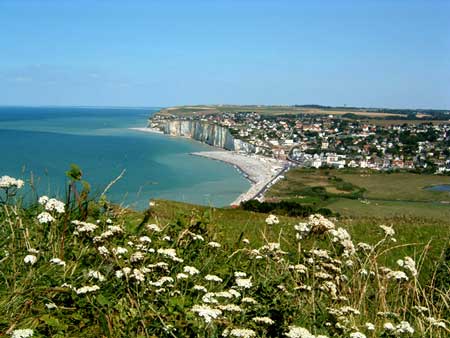 in Normandy, France, Charlotte Corday was a member of a minor aristocratic family. She was a fifth-generation matrilineal descendant of the dramatist Pierre Corneille. Her parents were cousins.
in Normandy, France, Charlotte Corday was a member of a minor aristocratic family. She was a fifth-generation matrilineal descendant of the dramatist Pierre Corneille. Her parents were cousins.
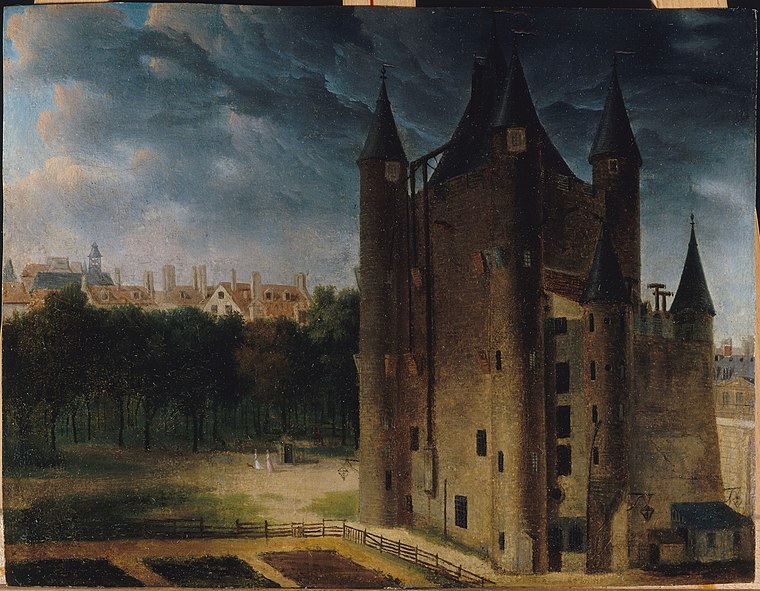 Religious personalities also figured prominently among the victims: the massacres occurred during a time of great and rising resentment against the Roman Catholic Church, which eventually led to the temporary dechristianisation of France. Over a 48-hour period beginning on 2 September 1792, as the Legislative Assembly (successor to the National Constituent Assembly) dissolved into chaos, angry mobs massacred 3 bishops, including the Archbishop of Arles, and more than 200 priests.
Religious personalities also figured prominently among the victims: the massacres occurred during a time of great and rising resentment against the Roman Catholic Church, which eventually led to the temporary dechristianisation of France. Over a 48-hour period beginning on 2 September 1792, as the Legislative Assembly (successor to the National Constituent Assembly) dissolved into chaos, angry mobs massacred 3 bishops, including the Archbishop of Arles, and more than 200 priests.
She went first to the National Assembly to carry out her plan, but discovered that Marat no longer attended meetings. She went to Marat's home before noon on 13 July, claiming to have knowledge of a planned Girondist uprising in Caen; she was turned away. On her return that evening, Marat admitted her. At the time, he conducted most of his affairs from a bathtub because of a debilitating skin condition. Marat wrote down the names of the Girondists that she gave to him, then she pulled out the knife and plunged it into his chest, piercing his lung, aorta and left ventricle. He called out, Aidez-moi, ma chère amie! ("Help me, my dear friend!") and died.On 9 July 1793, Corday left her cousin, carrying a copy of Plutarch's Parallel Lives, and went to Paris, where she took a room at the Hôtel de Providence.
She went to Marat's home before noon on 13 July, claiming to have knowledge of a planned Girondist uprising in Caen; she was turned away. On her return that evening, Marat admitted her. At the time, he conducted most of his affairs from a bathtub because of a debilitating skin condition. Marat wrote down the names of the Girondists that she gave to him, then she pulled out the knife and plunged it into his chest, piercing his lung, aorta and left ventricle. He called out, Aidez-moi, ma chère amie! ("Help me, my dear friend!") and died.On 9 July 1793, Corday left her cousin, carrying a copy of Plutarch's Parallel Lives, and went to Paris, where she took a room at the Hôtel de Providence.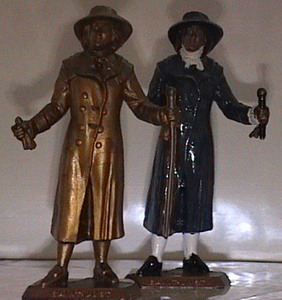 She bought a kitchen knife with a six-inch blade. She then wrote her Addresse aux Français amis des lois et de la paix ("Address to the French people, friends of Law and Peace") to explain her motives for assassinating Marat.
She bought a kitchen knife with a six-inch blade. She then wrote her Addresse aux Français amis des lois et de la paix ("Address to the French people, friends of Law and Peace") to explain her motives for assassinating Marat.
 They also collected an extraordinary amount of customary dues from the peasantry. There were labor dues (the corvee), as well as dues on salt, cloth, bread, wine and the use mills, granaries, presses and ovens. Collectively, the nobility owned about 30% of the land. By the 18th century, they were also becoming involved in banking, finance, shipping, insurance and manufacturing. They were also the leading patrons of the arts.The peasantry consisted of at least twenty-one million individuals during the 18th century. Their standard of living was perhaps better than the European peasantry in general. However, the French peasant continued to live in utmost poverty. Collectively, the peasantry owned 30-40% of the available land but mostly in small, semi-feudal plots. Most peasants did not own their land but rented it from those peasants who were wealthier or from the nobility. They tried to supplement their income by hiring themselves out as day laborers, textile workers or manual laborers. Peasants were victimized by heavy taxation - taxes were necessary to pay for the costs of war, something that had already consumed the French government for an entire century. So, the peasants paid taxes to the king, taxes to the church, taxes and dues to the lord of the manor, as well as numerous indirect taxes on wine, salt, and bread. Furthermore, the peasants also owed their lord a labor obligation. And throughout the 18th century, the price of rent was always increasing, as did the duties levied on goods sold in markets and fairs. By 1789, the plight of the French peasant was obvious. Taxes were increased as was rent. Peasants continued to use antiquated methods of agriculture. The price of bread soared and overall, prices continued to rise at a quicker rate than wages. To make matters worse, there was the poor harvest of 1788/89. The urban workers or artisans, as a group, consisted of all journeymen, factory workers and wage earners. The urban poor also lived in poverty, a poverty that was intensified by 1789. By that time, wages had increased by 22% while the cost of living increased 62%. . . Marie-Anne Charlotte de Corday d'Armont (27 July 1768 – 17 July 1793), known to history as Charlotte Corday, was a figure of theFrench Revolution. In 1793, she was executed under the guillotine for the assassination of Jacobin leader Jean-Paul Marat, who was in part responsible, through his role as a politician and journalist, for the more radical course the Revolution had taken. More specifically, he played a substantial role in the political purge of the Girondins, with whom Corday sympathized. His murder was memorialized in a celebrated painting by Jacques-Louis David which shows Marat after Corday had stabbed him to death in his bathtub. In 1847, writer Alphonse de Lamartine gave Corday the posthumous nickname l'ange de l'assassinat (the Angel of Assassination).Born in Saint-Saturnin-des-Ligneries, a hamlet in the commune of Écorches (Orne),
They also collected an extraordinary amount of customary dues from the peasantry. There were labor dues (the corvee), as well as dues on salt, cloth, bread, wine and the use mills, granaries, presses and ovens. Collectively, the nobility owned about 30% of the land. By the 18th century, they were also becoming involved in banking, finance, shipping, insurance and manufacturing. They were also the leading patrons of the arts.The peasantry consisted of at least twenty-one million individuals during the 18th century. Their standard of living was perhaps better than the European peasantry in general. However, the French peasant continued to live in utmost poverty. Collectively, the peasantry owned 30-40% of the available land but mostly in small, semi-feudal plots. Most peasants did not own their land but rented it from those peasants who were wealthier or from the nobility. They tried to supplement their income by hiring themselves out as day laborers, textile workers or manual laborers. Peasants were victimized by heavy taxation - taxes were necessary to pay for the costs of war, something that had already consumed the French government for an entire century. So, the peasants paid taxes to the king, taxes to the church, taxes and dues to the lord of the manor, as well as numerous indirect taxes on wine, salt, and bread. Furthermore, the peasants also owed their lord a labor obligation. And throughout the 18th century, the price of rent was always increasing, as did the duties levied on goods sold in markets and fairs. By 1789, the plight of the French peasant was obvious. Taxes were increased as was rent. Peasants continued to use antiquated methods of agriculture. The price of bread soared and overall, prices continued to rise at a quicker rate than wages. To make matters worse, there was the poor harvest of 1788/89. The urban workers or artisans, as a group, consisted of all journeymen, factory workers and wage earners. The urban poor also lived in poverty, a poverty that was intensified by 1789. By that time, wages had increased by 22% while the cost of living increased 62%. . . Marie-Anne Charlotte de Corday d'Armont (27 July 1768 – 17 July 1793), known to history as Charlotte Corday, was a figure of theFrench Revolution. In 1793, she was executed under the guillotine for the assassination of Jacobin leader Jean-Paul Marat, who was in part responsible, through his role as a politician and journalist, for the more radical course the Revolution had taken. More specifically, he played a substantial role in the political purge of the Girondins, with whom Corday sympathized. His murder was memorialized in a celebrated painting by Jacques-Louis David which shows Marat after Corday had stabbed him to death in his bathtub. In 1847, writer Alphonse de Lamartine gave Corday the posthumous nickname l'ange de l'assassinat (the Angel of Assassination).Born in Saint-Saturnin-des-Ligneries, a hamlet in the commune of Écorches (Orne), in Normandy, France, Charlotte Corday was a member of a minor aristocratic family. She was a fifth-generation matrilineal descendant of the dramatist Pierre Corneille. Her parents were cousins.
in Normandy, France, Charlotte Corday was a member of a minor aristocratic family. She was a fifth-generation matrilineal descendant of the dramatist Pierre Corneille. Her parents were cousins.
While Charlotte was a young girl, her mother, Charlotte Marie Jacqueline Gaultier de Mesnival and her older sister died. Her father, Jacques François de Corday, seigneur d'Armont (1737–1798), unable to cope with his grief over their death, sent Charlotte and her younger sister to the Abbaye-aux-Dames convent in Caen, where she had access to the abbey's library and first encountered the writings of Plutarch,Rousseau and Voltaire.
where she had access to the abbey's library and first encountered the writings of Plutarch,Rousseau and Voltaire. After 1791, she lived in Caen with her cousin, Madame Le Coustellier de Bretteville-Gouville. The two developed a close relationship and Corday was the sole heir to her cousin's estate.
After 1791, she lived in Caen with her cousin, Madame Le Coustellier de Bretteville-Gouville. The two developed a close relationship and Corday was the sole heir to her cousin's estate. Jean-Paul Marat was a member of the radical Jacobin faction which had a leading role during theReign of Terror. As a journalist, he exerted power and influence through his newspaper, L'Ami du peuple ("The Friend of the People").
Jean-Paul Marat was a member of the radical Jacobin faction which had a leading role during theReign of Terror. As a journalist, he exerted power and influence through his newspaper, L'Ami du peuple ("The Friend of the People").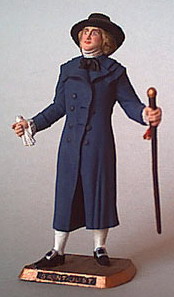
 where she had access to the abbey's library and first encountered the writings of Plutarch,Rousseau and Voltaire.
where she had access to the abbey's library and first encountered the writings of Plutarch,Rousseau and Voltaire. After 1791, she lived in Caen with her cousin, Madame Le Coustellier de Bretteville-Gouville. The two developed a close relationship and Corday was the sole heir to her cousin's estate.
After 1791, she lived in Caen with her cousin, Madame Le Coustellier de Bretteville-Gouville. The two developed a close relationship and Corday was the sole heir to her cousin's estate. Jean-Paul Marat was a member of the radical Jacobin faction which had a leading role during theReign of Terror. As a journalist, he exerted power and influence through his newspaper, L'Ami du peuple ("The Friend of the People").
Jean-Paul Marat was a member of the radical Jacobin faction which had a leading role during theReign of Terror. As a journalist, he exerted power and influence through his newspaper, L'Ami du peuple ("The Friend of the People").Corday's decision to kill Marat was stimulated not only by her revulsion at the September Massacres, for which she held Marat responsible, but for her fear of an all-out civil war.The September Massacres were a wave of mob violence which overtook Paris in late summer 1792, during the French Revolution. By the time it had subsided, half the prison population of Paris had been executed: some 1,200 trapped prisoners, including many women and young boys. Sporadic violence, in particular against the Roman Catholic Church, would continue throughout France for nearly a decade to come.he political situation in Paris on the eve of the September Massacres was dire. No individual or organized body could truly claim exclusive sovereignty. The monarchy and short-lived Constitution of 1791 had been overthrown with the bloody journée of 10 August 1792, in which theTuileries Palace  was stormed by the mob and the royal family fled for their lives. The Legislative Assembly had been left impotent after a large number of deputies had fled, and its successor, the National Convention, had not yet met. To further complicate this matter, the insurrectionary Paris commune established 9 August 1792 incorporated some of the most radical revolutionary elements, including the sans-culottes, and briefly contended for the role of de facto government of France. Lacking a sovereign power, the Parisians' fear, hatred, and prejudice proved to be the seeds of the September Massacres
was stormed by the mob and the royal family fled for their lives. The Legislative Assembly had been left impotent after a large number of deputies had fled, and its successor, the National Convention, had not yet met. To further complicate this matter, the insurrectionary Paris commune established 9 August 1792 incorporated some of the most radical revolutionary elements, including the sans-culottes, and briefly contended for the role of de facto government of France. Lacking a sovereign power, the Parisians' fear, hatred, and prejudice proved to be the seeds of the September Massacres
 was stormed by the mob and the royal family fled for their lives. The Legislative Assembly had been left impotent after a large number of deputies had fled, and its successor, the National Convention, had not yet met. To further complicate this matter, the insurrectionary Paris commune established 9 August 1792 incorporated some of the most radical revolutionary elements, including the sans-culottes, and briefly contended for the role of de facto government of France. Lacking a sovereign power, the Parisians' fear, hatred, and prejudice proved to be the seeds of the September Massacres
was stormed by the mob and the royal family fled for their lives. The Legislative Assembly had been left impotent after a large number of deputies had fled, and its successor, the National Convention, had not yet met. To further complicate this matter, the insurrectionary Paris commune established 9 August 1792 incorporated some of the most radical revolutionary elements, including the sans-culottes, and briefly contended for the role of de facto government of France. Lacking a sovereign power, the Parisians' fear, hatred, and prejudice proved to be the seeds of the September Massacres
The night before the assault on the Tuileries on 10 August 1792, an insurrection planned by the Jacobins overthrew the current Paris Commune headed by Pétion
headed by Pétion and proclaimed a new revolutionary Commune headed by transitional authorities. During the storming of the Tuileries Palace by the insurrectionists, Louis XVI fled with the royal family, and his authority as King was suspended by the Legislative Assembly; a de facto executive was named, but the actual power of decision rested with the revolutionary Commune, whose strength resided in the mobilized sans-culottes, the vast majority of Paris' fairly poor population. Supported by a new armed force (the 48 sections of Paris were fully equipped with munitions from the plundered arsenals the days before the Assault of the Tuileries, substituting the 60 National Guard battalions) the Commune and its sans-culottes took control of the city and dominated the Legislative Assembly and its decisions and for some weeks the Commune was the actual government of France.
and proclaimed a new revolutionary Commune headed by transitional authorities. During the storming of the Tuileries Palace by the insurrectionists, Louis XVI fled with the royal family, and his authority as King was suspended by the Legislative Assembly; a de facto executive was named, but the actual power of decision rested with the revolutionary Commune, whose strength resided in the mobilized sans-culottes, the vast majority of Paris' fairly poor population. Supported by a new armed force (the 48 sections of Paris were fully equipped with munitions from the plundered arsenals the days before the Assault of the Tuileries, substituting the 60 National Guard battalions) the Commune and its sans-culottes took control of the city and dominated the Legislative Assembly and its decisions and for some weeks the Commune was the actual government of France.
 headed by Pétion
headed by Pétion and proclaimed a new revolutionary Commune headed by transitional authorities. During the storming of the Tuileries Palace by the insurrectionists, Louis XVI fled with the royal family, and his authority as King was suspended by the Legislative Assembly; a de facto executive was named, but the actual power of decision rested with the revolutionary Commune, whose strength resided in the mobilized sans-culottes, the vast majority of Paris' fairly poor population. Supported by a new armed force (the 48 sections of Paris were fully equipped with munitions from the plundered arsenals the days before the Assault of the Tuileries, substituting the 60 National Guard battalions) the Commune and its sans-culottes took control of the city and dominated the Legislative Assembly and its decisions and for some weeks the Commune was the actual government of France.
and proclaimed a new revolutionary Commune headed by transitional authorities. During the storming of the Tuileries Palace by the insurrectionists, Louis XVI fled with the royal family, and his authority as King was suspended by the Legislative Assembly; a de facto executive was named, but the actual power of decision rested with the revolutionary Commune, whose strength resided in the mobilized sans-culottes, the vast majority of Paris' fairly poor population. Supported by a new armed force (the 48 sections of Paris were fully equipped with munitions from the plundered arsenals the days before the Assault of the Tuileries, substituting the 60 National Guard battalions) the Commune and its sans-culottes took control of the city and dominated the Legislative Assembly and its decisions and for some weeks the Commune was the actual government of France.The Commune took major steps towards democratizing the Revolution: the adoption of universal suffrage, the arming of the civilian population, absolute abolition of all remnants of noble privileges, the selling of the properties of the émigrés. These events meant a change of direction from the political and constitutional perspective of the Girondists, to a more social approach given by the Commune, as Cambon declared the 27 August:
to a more social approach given by the Commune, as Cambon declared the 27 August:
 to a more social approach given by the Commune, as Cambon declared the 27 August:
to a more social approach given by the Commune, as Cambon declared the 27 August:To reject with more efficacy the defenders of despotism, we have to address the fortunes of the poor, we have to associate the Revolution with this multitude that possess nothing, we have to convert the people to the cause.
Besides these measures, the Commune engaged in a policy of political repression of all suspected counter-revolutionary activities. Beginning on 11 August, every Paris section named its committee of vigilance. It was mostly these decentralized committees, not the Commune, that brought about the repression of August and September 1792. From 15 to 25 August, around 500 detentions were registered. Half the detentions were made against non-jure priests, but even jure priests were caught in the wave. In Paris, all residual monasteries were closed and the rest of the religious orders were dissolved by the law of 15 August.On 2 September, news reached Paris that the Duke of Brunswick, Karl Wilhelm Ferdinand's Prussian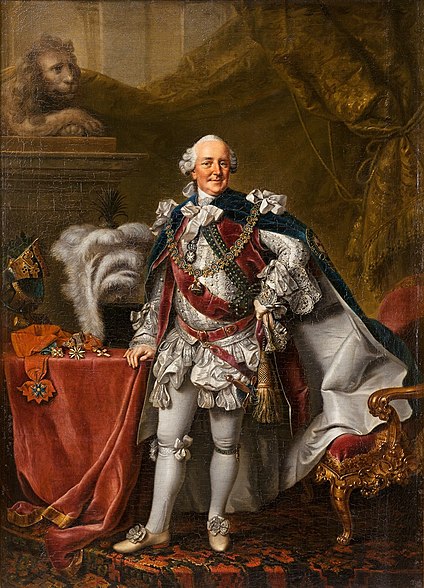 army had invaded France (19 August), and with the invasion the fortress of Verdunhad
army had invaded France (19 August), and with the invasion the fortress of Verdunhad 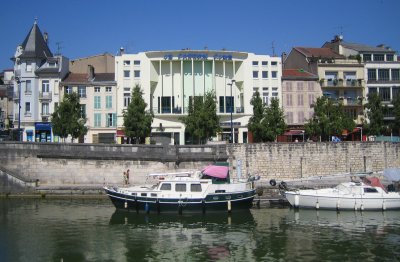 quickly fallen, that perhaps its own aristocratic officers had capitulated too easily, and that the Prussians were advancing quickly toward the capital. On 25 July, Brunswick had circulated his bombastic "Brunswick Manifesto"
quickly fallen, that perhaps its own aristocratic officers had capitulated too easily, and that the Prussians were advancing quickly toward the capital. On 25 July, Brunswick had circulated his bombastic "Brunswick Manifesto"  from Coblenz: his avowed aim was
from Coblenz: his avowed aim was
 army had invaded France (19 August), and with the invasion the fortress of Verdunhad
army had invaded France (19 August), and with the invasion the fortress of Verdunhad  quickly fallen, that perhaps its own aristocratic officers had capitulated too easily, and that the Prussians were advancing quickly toward the capital. On 25 July, Brunswick had circulated his bombastic "Brunswick Manifesto"
quickly fallen, that perhaps its own aristocratic officers had capitulated too easily, and that the Prussians were advancing quickly toward the capital. On 25 July, Brunswick had circulated his bombastic "Brunswick Manifesto"  from Coblenz: his avowed aim was
from Coblenz: his avowed aim was
- "to put an end to the anarchy in the interior of France, to check the attacks upon the throne and the altar, to reestablish the legal power, to restore to the king the security and the liberty of which he is now deprived and to place him in a position to exercise once more the legitimate authority which belongs to him."
Additionally, the Manifesto threatened the French population with instant punishment should it resist the Imperial and Prussian armies, or the reinstatement of the monarchy. Such information fueled this first wave of mob hysteria of the Revolution. By the end of August, rumours circulated that many in Paris – such as non-juring priests – who secretly opposed the Revolution, would support the First Coalition of foreign powers allied against it. Furthermore, Paris lacked extensive food stocks.]
When news that Brunswick had captured Verdun reached the Convention, they ordered the tocsin rung and alarm guns fired, which, without a doubt, added to the sense of panic. An army of 60,000 was to be enlisted at the Champ de Mars, the British ambassador reported:
When news that Brunswick had captured Verdun reached the Convention, they ordered the tocsin rung and alarm guns fired, which, without a doubt, added to the sense of panic. An army of 60,000 was to be enlisted at the Champ de Mars, the British ambassador reported:

A party at the instigation of some one or other declared they would not quit Paris, as long as the prisons were filled with Traitors (for they called those so, that were confined in thedifferent Prisons and Churches), who might in the absence of such a number of Citizens rise and not only effect the release of His Majesty, but make an entire counterrevolution.
The first instance of massacre occurred when 24 non-juring priests were being transported to the prison of the Abbey of Saint-Germain-des-Prés, which had become a national prison of the revolutionary government. They were attacked by a mob that quickly killed them all as they were trying to escape into the prison, then mutilated the bodies, "with circumstances of barbarity too shocking to describe" according to the British diplomatic dispatch. Of 284 prisoners, 135 were killed, 27 were transferred, 86 were set free, and 36 had uncertain fates. In the afternoon of 2 September 150 priests in the convent of Carmelites were massacred, mostly by sans-culottes. On 3 and 4 September, groups broke into other Paris prisons, where they murdered the prisoners, who, some feared, were counter-revolutionaries who would aid the invading Prussians. From 2 to 7 September, summary trials took place in all Paris prisons. Almost 1,400 prisoners were condemned and executed, in truth half the detained persons from the previous days. Among the victims were more than 200 priests, almost 100 Swiss guards
which had become a national prison of the revolutionary government. They were attacked by a mob that quickly killed them all as they were trying to escape into the prison, then mutilated the bodies, "with circumstances of barbarity too shocking to describe" according to the British diplomatic dispatch. Of 284 prisoners, 135 were killed, 27 were transferred, 86 were set free, and 36 had uncertain fates. In the afternoon of 2 September 150 priests in the convent of Carmelites were massacred, mostly by sans-culottes. On 3 and 4 September, groups broke into other Paris prisons, where they murdered the prisoners, who, some feared, were counter-revolutionaries who would aid the invading Prussians. From 2 to 7 September, summary trials took place in all Paris prisons. Almost 1,400 prisoners were condemned and executed, in truth half the detained persons from the previous days. Among the victims were more than 200 priests, almost 100 Swiss guards and many political prisoners and aristocrats
and many political prisoners and aristocrats
 which had become a national prison of the revolutionary government. They were attacked by a mob that quickly killed them all as they were trying to escape into the prison, then mutilated the bodies, "with circumstances of barbarity too shocking to describe" according to the British diplomatic dispatch. Of 284 prisoners, 135 were killed, 27 were transferred, 86 were set free, and 36 had uncertain fates. In the afternoon of 2 September 150 priests in the convent of Carmelites were massacred, mostly by sans-culottes. On 3 and 4 September, groups broke into other Paris prisons, where they murdered the prisoners, who, some feared, were counter-revolutionaries who would aid the invading Prussians. From 2 to 7 September, summary trials took place in all Paris prisons. Almost 1,400 prisoners were condemned and executed, in truth half the detained persons from the previous days. Among the victims were more than 200 priests, almost 100 Swiss guards
which had become a national prison of the revolutionary government. They were attacked by a mob that quickly killed them all as they were trying to escape into the prison, then mutilated the bodies, "with circumstances of barbarity too shocking to describe" according to the British diplomatic dispatch. Of 284 prisoners, 135 were killed, 27 were transferred, 86 were set free, and 36 had uncertain fates. In the afternoon of 2 September 150 priests in the convent of Carmelites were massacred, mostly by sans-culottes. On 3 and 4 September, groups broke into other Paris prisons, where they murdered the prisoners, who, some feared, were counter-revolutionaries who would aid the invading Prussians. From 2 to 7 September, summary trials took place in all Paris prisons. Almost 1,400 prisoners were condemned and executed, in truth half the detained persons from the previous days. Among the victims were more than 200 priests, almost 100 Swiss guards and many political prisoners and aristocrats
and many political prisoners and aristocratsThe crowds killed the Princesse de Lamballe, friend of Marie Antoinette and sister-in-law to the duc d'Orléans, and mutilated her body. Her head was paraded atop a pike under the captive Queen's windows at the Temple,
friend of Marie Antoinette and sister-in-law to the duc d'Orléans, and mutilated her body. Her head was paraded atop a pike under the captive Queen's windows at the Temple,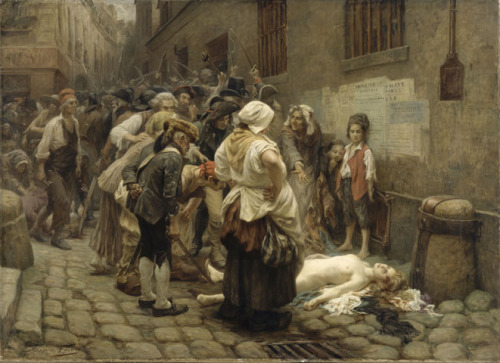 the most gruesome horrors of the French Revolution was this death of the Princesse de Lamballe on September 3, 1792. Even the Marquis de Sade, having "wept tears of blood" over his lost paedophiliac-coprophiliac masterpiece The 120 Days of Sodom, shuddered when he heard that the princesse, upon decapitation, had her mons pubis sliced off and worn as a moustache..the head of the Princesse de Lamballe could be seen at the end of a pike, her face twisted into a grimace and her long blond hair flowing in the wind, caked with blood. Her naked, mutilated body had been dragged through the streets by her assassins; it lay on the ground among a group of madmen; they had torn out her heart and brandished it at the end
the most gruesome horrors of the French Revolution was this death of the Princesse de Lamballe on September 3, 1792. Even the Marquis de Sade, having "wept tears of blood" over his lost paedophiliac-coprophiliac masterpiece The 120 Days of Sodom, shuddered when he heard that the princesse, upon decapitation, had her mons pubis sliced off and worn as a moustache..the head of the Princesse de Lamballe could be seen at the end of a pike, her face twisted into a grimace and her long blond hair flowing in the wind, caked with blood. Her naked, mutilated body had been dragged through the streets by her assassins; it lay on the ground among a group of madmen; they had torn out her heart and brandished it at the end  of a sword like a trophy.
of a sword like a trophy.
 friend of Marie Antoinette and sister-in-law to the duc d'Orléans, and mutilated her body. Her head was paraded atop a pike under the captive Queen's windows at the Temple,
friend of Marie Antoinette and sister-in-law to the duc d'Orléans, and mutilated her body. Her head was paraded atop a pike under the captive Queen's windows at the Temple, the most gruesome horrors of the French Revolution was this death of the Princesse de Lamballe on September 3, 1792. Even the Marquis de Sade, having "wept tears of blood" over his lost paedophiliac-coprophiliac masterpiece The 120 Days of Sodom, shuddered when he heard that the princesse, upon decapitation, had her mons pubis sliced off and worn as a moustache..the head of the Princesse de Lamballe could be seen at the end of a pike, her face twisted into a grimace and her long blond hair flowing in the wind, caked with blood. Her naked, mutilated body had been dragged through the streets by her assassins; it lay on the ground among a group of madmen; they had torn out her heart and brandished it at the end
the most gruesome horrors of the French Revolution was this death of the Princesse de Lamballe on September 3, 1792. Even the Marquis de Sade, having "wept tears of blood" over his lost paedophiliac-coprophiliac masterpiece The 120 Days of Sodom, shuddered when he heard that the princesse, upon decapitation, had her mons pubis sliced off and worn as a moustache..the head of the Princesse de Lamballe could be seen at the end of a pike, her face twisted into a grimace and her long blond hair flowing in the wind, caked with blood. Her naked, mutilated body had been dragged through the streets by her assassins; it lay on the ground among a group of madmen; they had torn out her heart and brandished it at the end  of a sword like a trophy.
of a sword like a trophy.- Hit by hammers on the head. Goes unconscious.
- Violated either before or after.
 Breasts and privates cut off.
Breasts and privates cut off.- Or, her heart cut out, cooked and eaten.
- Possible disembowellment.
- Head mounted on a pike.

- Innards mounted on a pike.
- Comte de Beaujolais sees his aunt's head and body pass by the Palais-Royal.
- Apprentice wax modeller Marie Grosholz forced to make a cast of the head and trembles too
 much to work - she had known the princesse in life.
much to work - she had known the princesse in life.  Stop at a barber shop so the princesse's hair can be restyled.
Stop at a barber shop so the princesse's hair can be restyled. The head taken to the Temple, where the royal family was imprisoned, so that Marie Antoinette could kiss her friend's lips.
The head taken to the Temple, where the royal family was imprisoned, so that Marie Antoinette could kiss her friend's lips.
- Louis XVI and Marie Antoinette were playing backgammon when the head arrives at the Tower.
- Officials close the shutters and keep the family away from the windows.
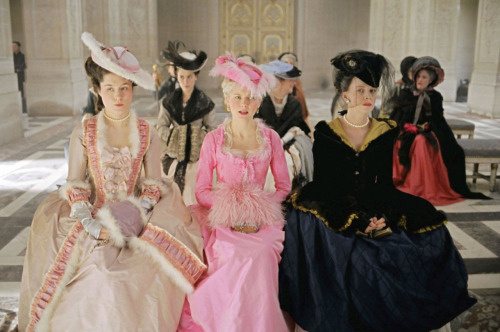
- Marie Antoinette fainted.
- Another pike reported to have a blood- and mud-stained chemise.
- Commissioner Daujon allows the mob to parade the head around the Tower but not to come inside.

Anita Louise as the princess
Daujon prevents entry "by the use of the tricolour ribbon on the door."- Rioting continues until 5 pm.
 A Jacques Pointel rescues the head.
A Jacques Pointel rescues the head.- The princesse's father-in-law, the Duc de Penthièvre, retrieves body and head.
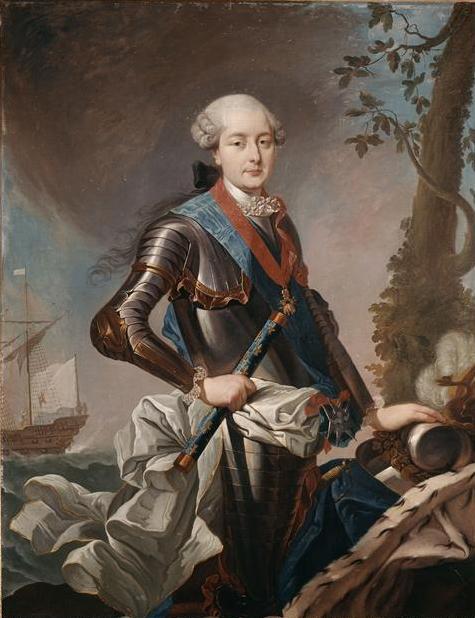
- The princesse interred in the Penthièvre crypt. In 1791, he moved to the Château de Bizy, at Vernon in Normandy,
 [ where his daughter joined him in April of that year after leaving her husband, the duc d'Orléans.
[ where his daughter joined him in April of that year after leaving her husband, the duc d'Orléans. Greatly respected by the people because of his philanthropy, the duke was never bothered by the radicals as the French Revolution progressed. Others in his immediate family, however, were not spared. On 3 September 1792, his daughter-in-law,as we have seen , the princesse de Lamballe, was savagely murdered, and on 21 January 1793, his cousin Louis XVI was executed. He never saw the arrest of his daughter in April 1793, as he died on 4 March 1793 at Bizy. On the night of 6 to 7 March, his body was brought clandestinely to Dreux, where it was buried in the family crypt at the Collégiale Saint-Étienne
Greatly respected by the people because of his philanthropy, the duke was never bothered by the radicals as the French Revolution progressed. Others in his immediate family, however, were not spared. On 3 September 1792, his daughter-in-law,as we have seen , the princesse de Lamballe, was savagely murdered, and on 21 January 1793, his cousin Louis XVI was executed. He never saw the arrest of his daughter in April 1793, as he died on 4 March 1793 at Bizy. On the night of 6 to 7 March, his body was brought clandestinely to Dreux, where it was buried in the family crypt at the Collégiale Saint-Étienne . During his lifetime, the duc de Penthièvre had had one passion, that of collecting watches.
. During his lifetime, the duc de Penthièvre had had one passion, that of collecting watches.
 Religious personalities also figured prominently among the victims: the massacres occurred during a time of great and rising resentment against the Roman Catholic Church, which eventually led to the temporary dechristianisation of France. Over a 48-hour period beginning on 2 September 1792, as the Legislative Assembly (successor to the National Constituent Assembly) dissolved into chaos, angry mobs massacred 3 bishops, including the Archbishop of Arles, and more than 200 priests.
Religious personalities also figured prominently among the victims: the massacres occurred during a time of great and rising resentment against the Roman Catholic Church, which eventually led to the temporary dechristianisation of France. Over a 48-hour period beginning on 2 September 1792, as the Legislative Assembly (successor to the National Constituent Assembly) dissolved into chaos, angry mobs massacred 3 bishops, including the Archbishop of Arles, and more than 200 priests.
Restif de la Bretonne saw the bodies piled high in front of the Châtelet and witnessed atrocities that he recorded in Les Nuits de Paris (1793).

She believed that Marat was threatening the Republic, and that his death would end violence throughout the nation. She also believed that King Louis XVI should not have been executed.[2]:160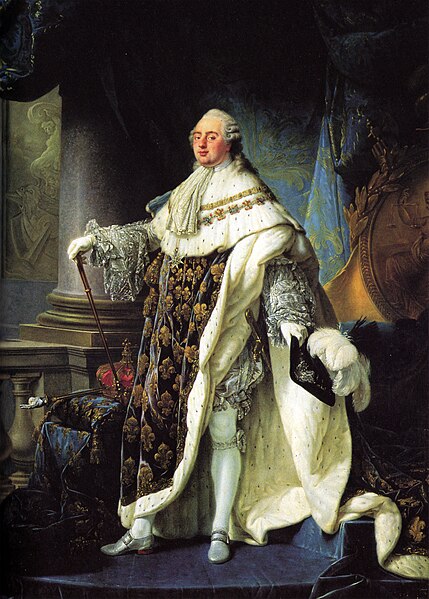

She went first to the National Assembly to carry out her plan, but discovered that Marat no longer attended meetings.

This is the moment memorialised by Jacques-Louis David's painting (illustration, right). The iconic pose of Marat dead in his bath has been reviewed from a different angle in Baudry's 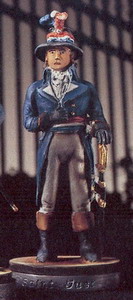 posthumous painting of 1860,
posthumous painting of 1860,
 both literally and interpretively: Corday, rather than Marat, has been made the hero of the action.At her trial, Corday testified that she had carried out the assassination alone, saying "I killed one man to save 100,000." It was likely an allusion to Maximilien Robespierre's words before the execution of King Louis XVI.
both literally and interpretively: Corday, rather than Marat, has been made the hero of the action.At her trial, Corday testified that she had carried out the assassination alone, saying "I killed one man to save 100,000." It was likely an allusion to Maximilien Robespierre's words before the execution of King Louis XVI.
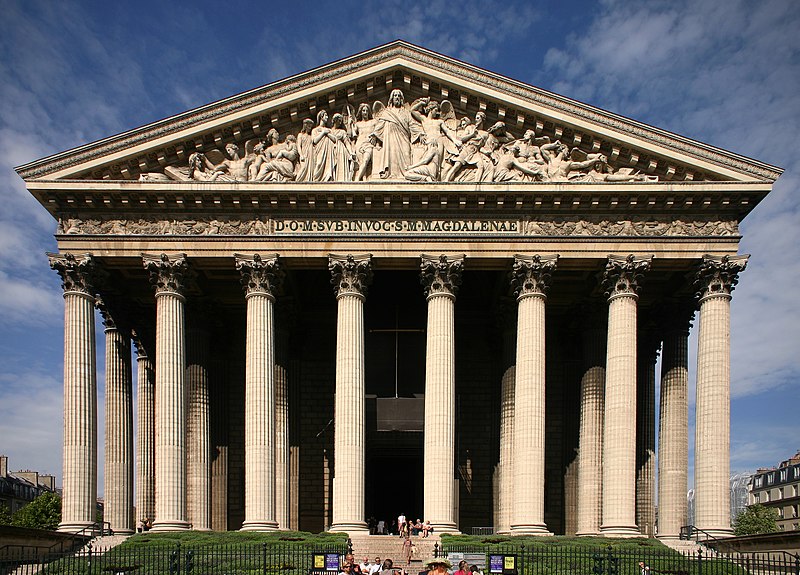 On 17 July 1793, four days after Marat was killed, Corday was executed under the guillotine and her corpse was disposed of in the Madeleine Cemetery.
On 17 July 1793, four days after Marat was killed, Corday was executed under the guillotine and her corpse was disposed of in the Madeleine Cemetery.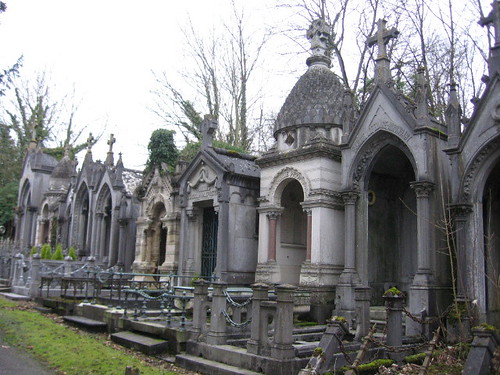

 both literally and interpretively: Corday, rather than Marat, has been made the hero of the action.At her trial, Corday testified that she had carried out the assassination alone, saying "I killed one man to save 100,000." It was likely an allusion to Maximilien Robespierre's words before the execution of King Louis XVI.
both literally and interpretively: Corday, rather than Marat, has been made the hero of the action.At her trial, Corday testified that she had carried out the assassination alone, saying "I killed one man to save 100,000." It was likely an allusion to Maximilien Robespierre's words before the execution of King Louis XVI.
 On 17 July 1793, four days after Marat was killed, Corday was executed under the guillotine and her corpse was disposed of in the Madeleine Cemetery.
On 17 July 1793, four days after Marat was killed, Corday was executed under the guillotine and her corpse was disposed of in the Madeleine Cemetery.
After her decapitation, a man named Legros lifted her head from the basket and slapped it on the cheek. Charles-Henri Sanson,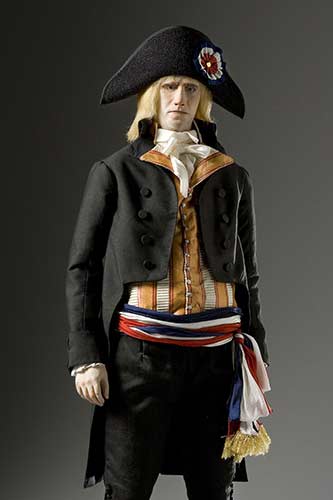 the executioner, indignantly rejected published reports that Legros was one of his assistants. However, Sanson stated in his diary that Legros was in fact a carpenter who had been hired to make repairs to the guillotine.
the executioner, indignantly rejected published reports that Legros was one of his assistants. However, Sanson stated in his diary that Legros was in fact a carpenter who had been hired to make repairs to the guillotine. Witnesses report an expression of "unequivocal indignation" on her face when her cheek was slapped. This slap was considered unacceptable and Legros was imprisoned for three months because of his outburst.Jacobin leaders had her body autopsied immediately after her death to see if she was a virgin. They believed there was a man sharing her bed and the assassination plans. To their dismay, she was found to be virgo intacta a condition that focused more attention on women throughout France—laundresses, housewives, domestic servants—who were also rising up against authority after having been controlled by men for so long.[5
Witnesses report an expression of "unequivocal indignation" on her face when her cheek was slapped. This slap was considered unacceptable and Legros was imprisoned for three months because of his outburst.Jacobin leaders had her body autopsied immediately after her death to see if she was a virgin. They believed there was a man sharing her bed and the assassination plans. To their dismay, she was found to be virgo intacta a condition that focused more attention on women throughout France—laundresses, housewives, domestic servants—who were also rising up against authority after having been controlled by men for so long.[5
 the executioner, indignantly rejected published reports that Legros was one of his assistants. However, Sanson stated in his diary that Legros was in fact a carpenter who had been hired to make repairs to the guillotine.
the executioner, indignantly rejected published reports that Legros was one of his assistants. However, Sanson stated in his diary that Legros was in fact a carpenter who had been hired to make repairs to the guillotine. Witnesses report an expression of "unequivocal indignation" on her face when her cheek was slapped. This slap was considered unacceptable and Legros was imprisoned for three months because of his outburst.Jacobin leaders had her body autopsied immediately after her death to see if she was a virgin. They believed there was a man sharing her bed and the assassination plans. To their dismay, she was found to be virgo intacta a condition that focused more attention on women throughout France—laundresses, housewives, domestic servants—who were also rising up against authority after having been controlled by men for so long.[5
Witnesses report an expression of "unequivocal indignation" on her face when her cheek was slapped. This slap was considered unacceptable and Legros was imprisoned for three months because of his outburst.Jacobin leaders had her body autopsied immediately after her death to see if she was a virgin. They believed there was a man sharing her bed and the assassination plans. To their dismay, she was found to be virgo intacta a condition that focused more attention on women throughout France—laundresses, housewives, domestic servants—who were also rising up against authority after having been controlled by men for so long.[5
The assassination did not stop the Jacobins or the Terror: Marat became a martyr, and busts of him replaced crucifixes and religious statues that had been banished under the new regime.Soon after her death, controversy arose surrounding the color of Corday's hair. Although her passport, filled out and signed by a Caen official, described her hair as chestnut brown, the painting "The Murder of Marat" by Jean-Jacques Hauer portrays Corday with powdered blonde hair. Following Corday's execution and the popularity of Hauer's painting, stories quickly spread about how Corday had hired a local coiffeur tostraighten and lighten her hair. Although this story rapidly became popular in Paris at the time, there is no historical evidence to support that it actually happened. Part of the reason for the discrepancy in descriptions of Corday can be attributed to the stigma attached to powdered hair. At the time, only nobility and royalty ever powdered their hair, and in that time of violent anti-royalist revolt, such an association could be powerful in influencing popular opinion.



No comments:
Post a Comment